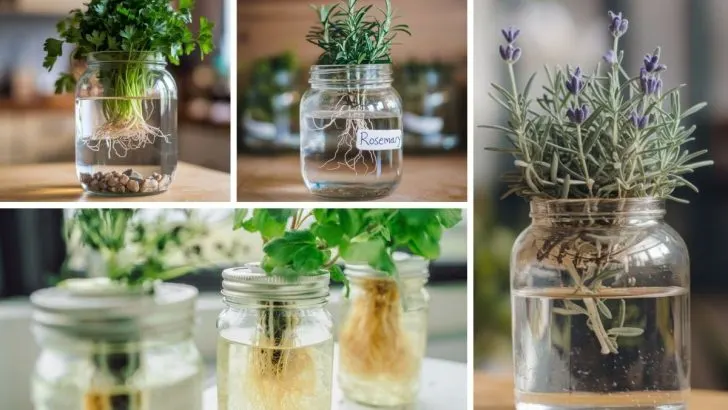Growing herbs in water is a fantastic way to enjoy gardening, even if you don’t have outdoor space or consider yourself lacking a “green thumb.” This method allows you to cultivate fresh, aromatic herbs right in your home, providing not only flavor for your culinary adventures but also adding a touch of nature to your indoor environment.
Whether you’ve always dreamed of a thriving herb garden but lack the space or simply want an easy, low-maintenance way to have fresh herbs year-round, growing herbs in water might be the perfect solution. Plus, it’s a simple and convenient way to have an ongoing supply of greenery, bringing both beauty and practicality to your living space.
In this article, we’ll introduce you to 17 herbs that you can easily grow in water, along with tips to keep them flourishing throughout the year.
1. Basil
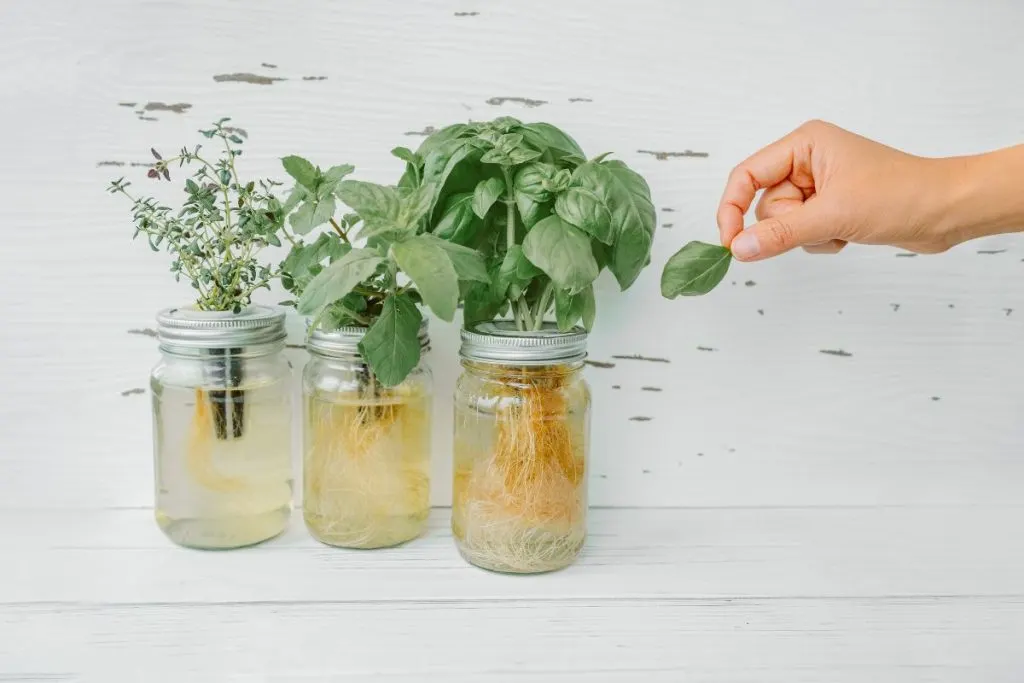
Benefits: Basil is a staple of Italian cuisine, known for its aromatic leaves that are packed with antioxidants and antibacterial properties. It’s also a rich source of vitamins and minerals.
Basil thrives beautifully in water. Simply change the water every 3 to 5 days, and you’ll have a fresh supply of fragrant basil leaves ready for your next dish.
2. Mint
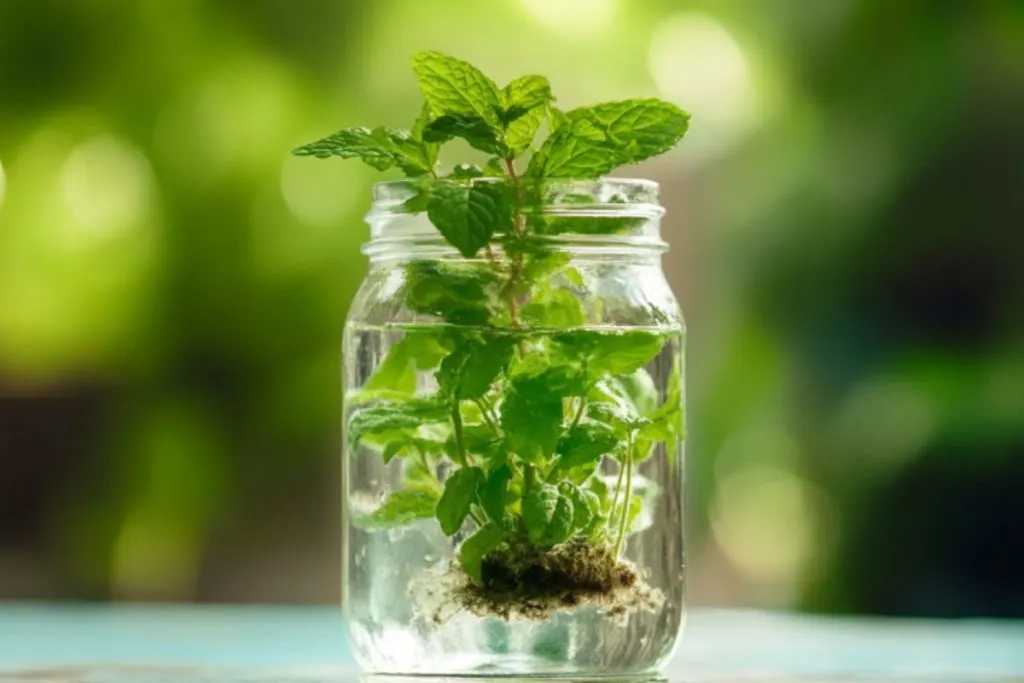
Benefits: Mint offers more than just its refreshing taste. It’s known to aid digestion, relieve headaches, and provide a cooling sensation that can soothe minor skin irritations.
Mint grows rapidly, making it a perfect candidate for water propagation. Be sure to refresh the water every 2-3 days to keep your mint healthy and thriving.
3. Oregano
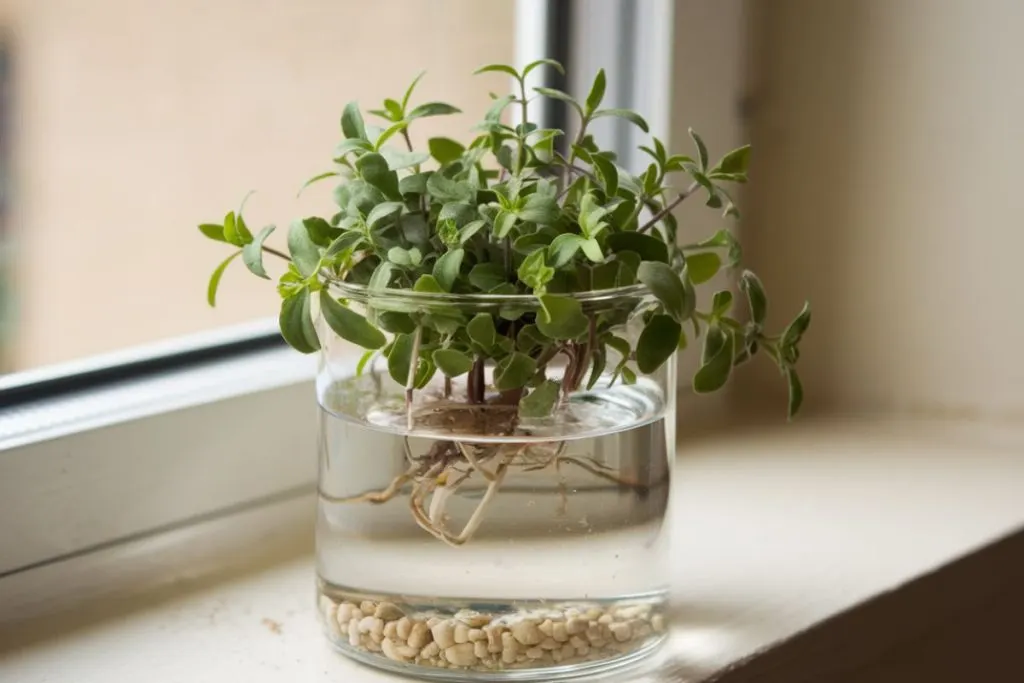
Benefits: Oregano is a powerhouse herb with antimicrobial and anti-inflammatory properties. It’s also rich in antioxidants and has been used in traditional medicine to help with respiratory issues.
Oregano does well in water, and with regular water changes, it can last indefinitely. Swap out the water every 5-7 days to encourage continuous growth.
4. Sage
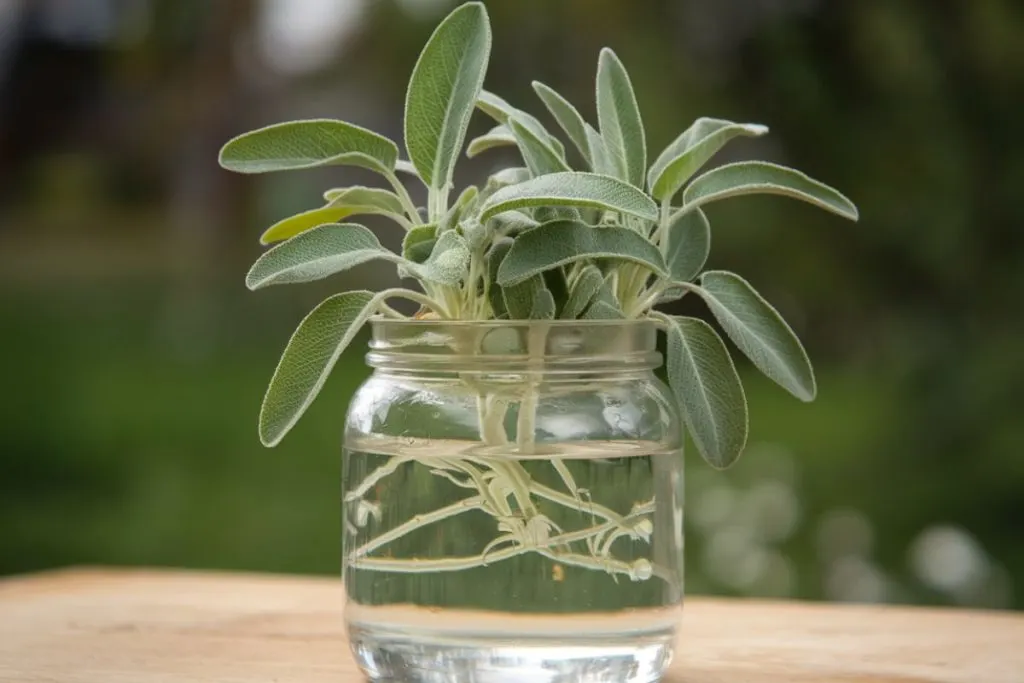
Benefits: Sage is celebrated for its cognitive-enhancing properties and has been used for its antimicrobial benefits. Its leaves can also be brewed into a soothing tea that aids digestion.
Sage adds a lovely fragrance to your home. Change the water every 1-2 weeks, making sure the leaves don’t get submerged to avoid rot.
5. Rosemary
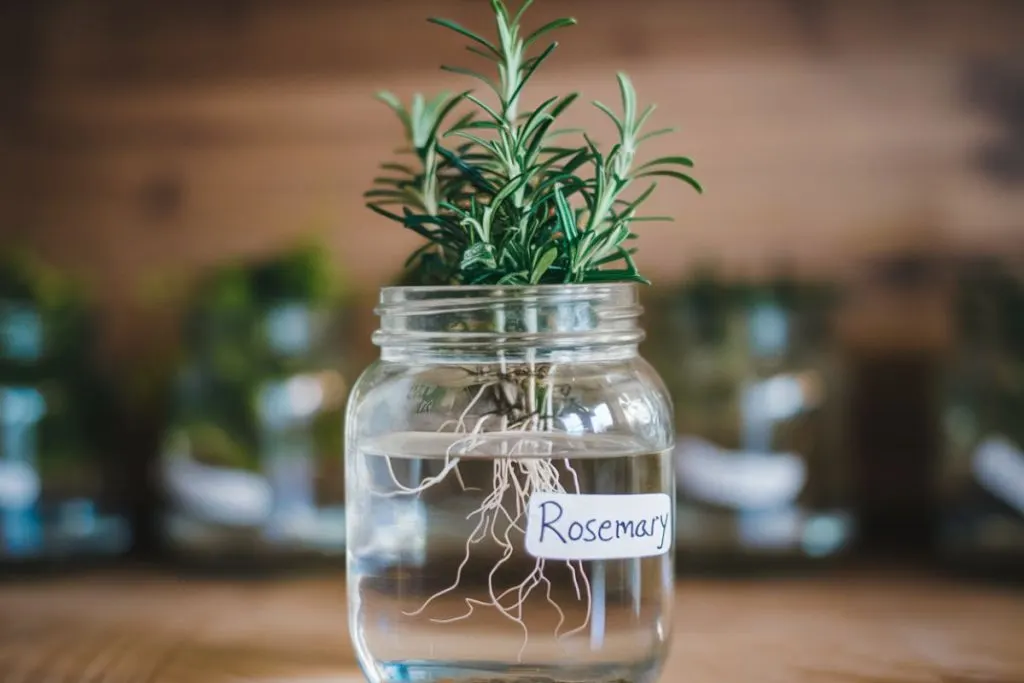
Benefits: Not only does rosemary fill your home with a delightful aroma, but it also contains compounds that may improve memory and concentration. It’s also a great source of antioxidants.
Rosemary can be a bit slow to root in water, but once established, it’s a sturdy herb. Change the water every 2 weeks and be patient as it develops its roots.
6. Thyme
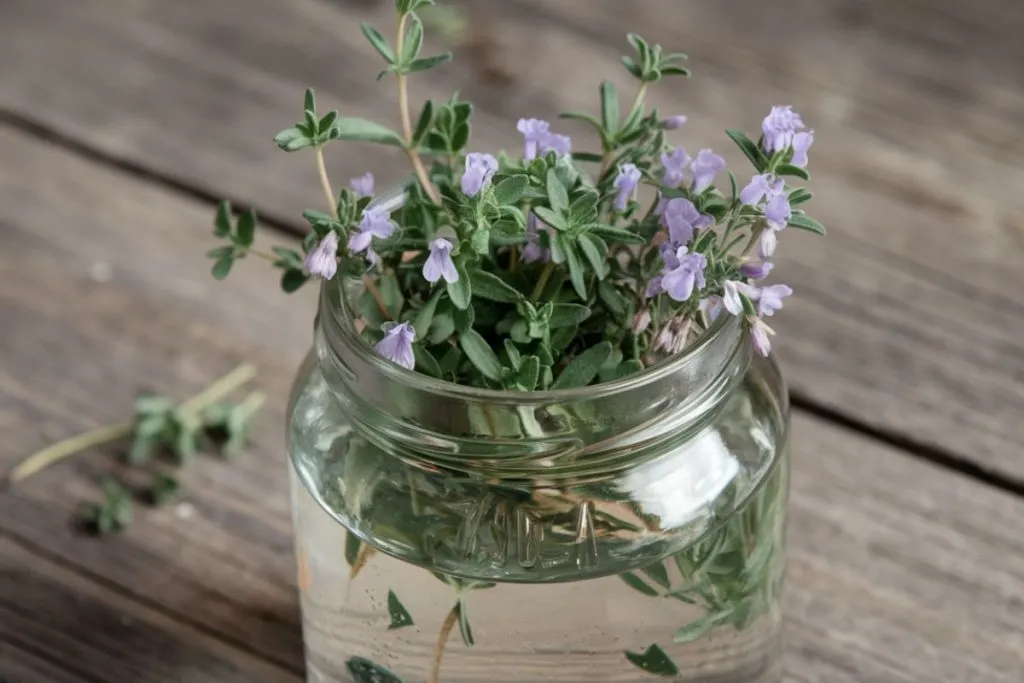
Benefits: Thyme is known for its immune-boosting properties and is commonly used to alleviate respiratory issues. It’s rich in essential oils, offering both flavor and health benefits.
Thyme is easy to care for. Replace the water every 1-2 weeks, and trim the plant regularly to promote healthy growth.
7. Chives
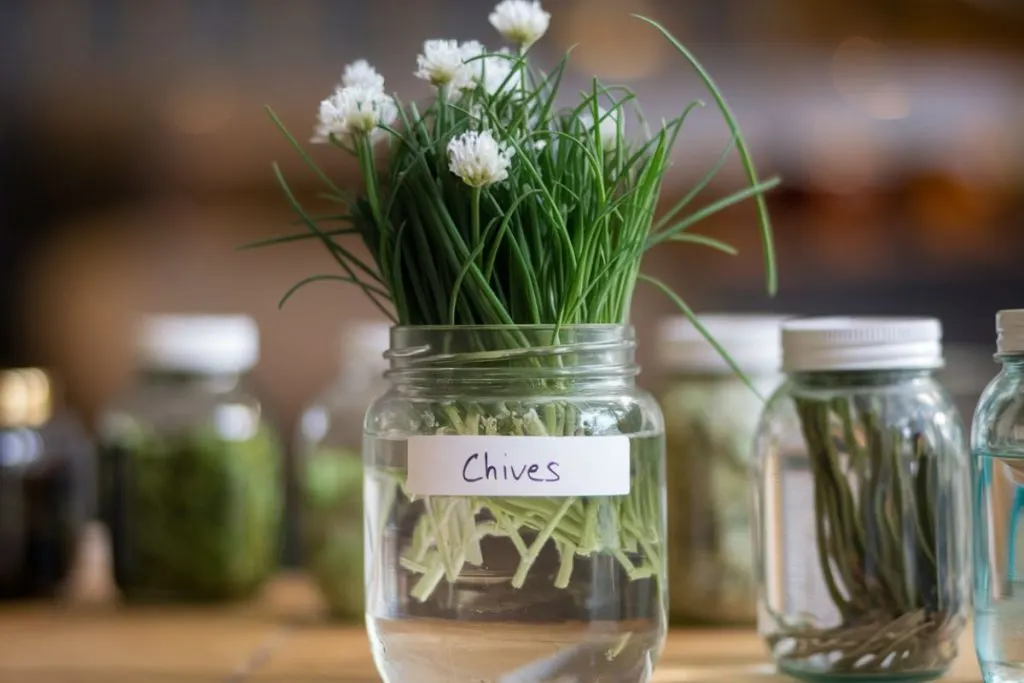
Benefits: Chives add a mild onion flavor to dishes and are packed with vitamins A and C, as well as antioxidants that support overall health.
Chives grow well in water. Refresh the water every 4-5 days and trim the leaves often to keep them thriving.
8. Lemongrass
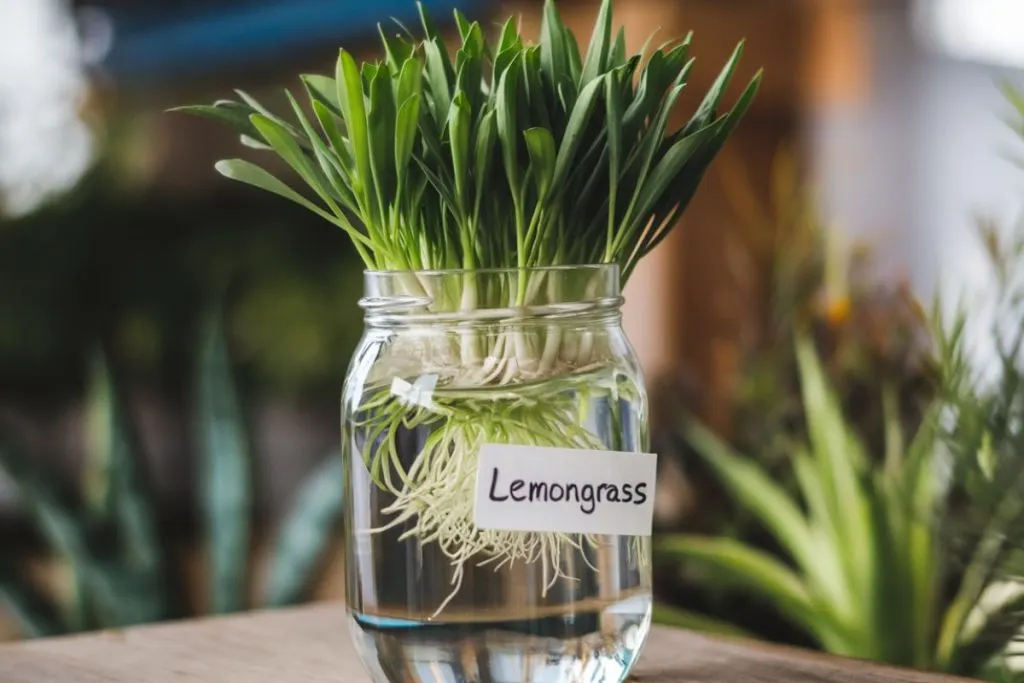
Benefits: Lemongrass has a refreshing citrus aroma and is commonly used to make soothing teas. It’s also believed to have calming properties and may help lower cholesterol.
Lemongrass develops a strong root system in water. Change the water every 1-2 weeks, and enjoy its vibrant citrus fragrance.
9. Cilantro
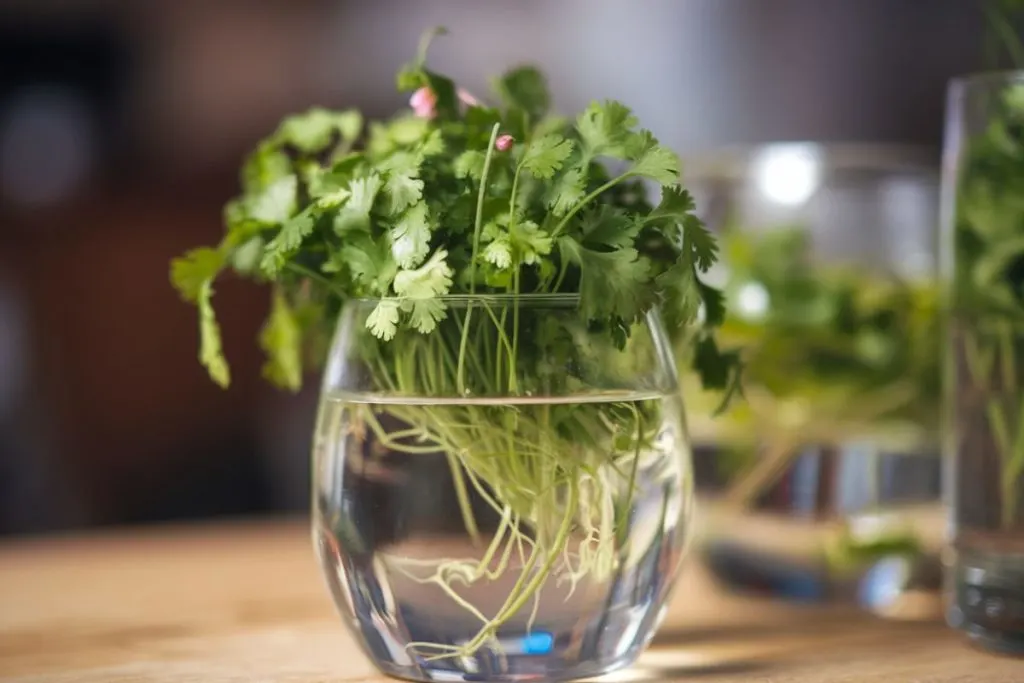
Benefits: Cilantro is a detoxifying herb that helps remove heavy metals from the body. It’s also a rich source of vitamins and minerals.
While cilantro can be a bit finicky, it can grow in water with proper care. Refresh the water every 3-4 days, and ensure it gets plenty of sunlight.
10. Parsley
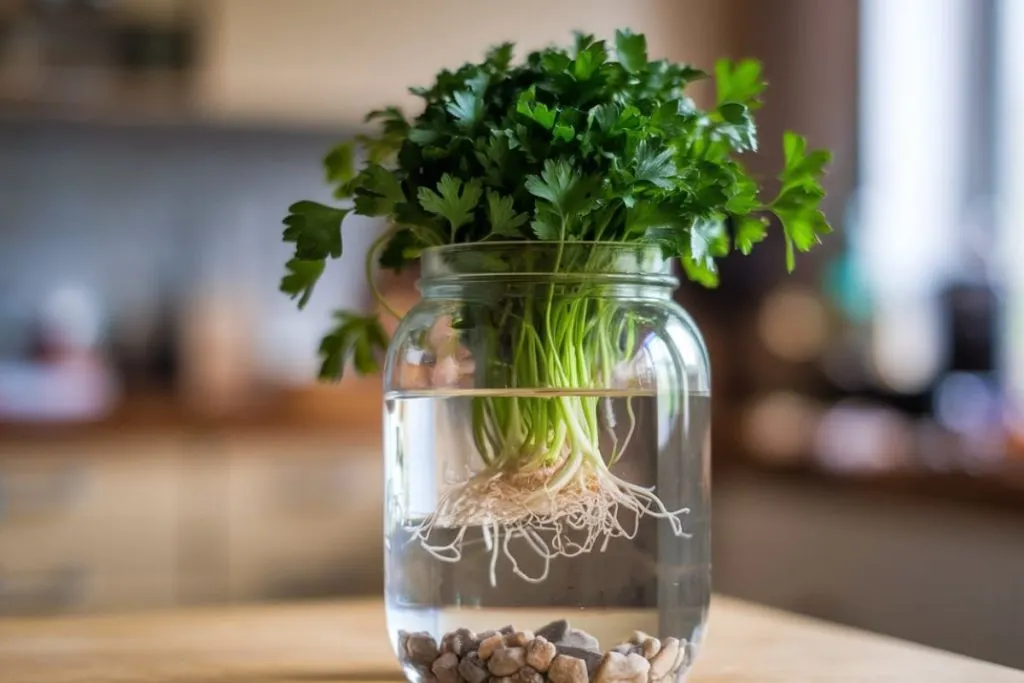
Benefits: Parsley is more than just a garnish. It’s loaded with vitamins K and C and contains antioxidants that promote heart health and bone strength.
Parsley does well in water. Change the water every 3-4 days, and pinch off any flowers to encourage leaf growth.
11. Lemon Balm
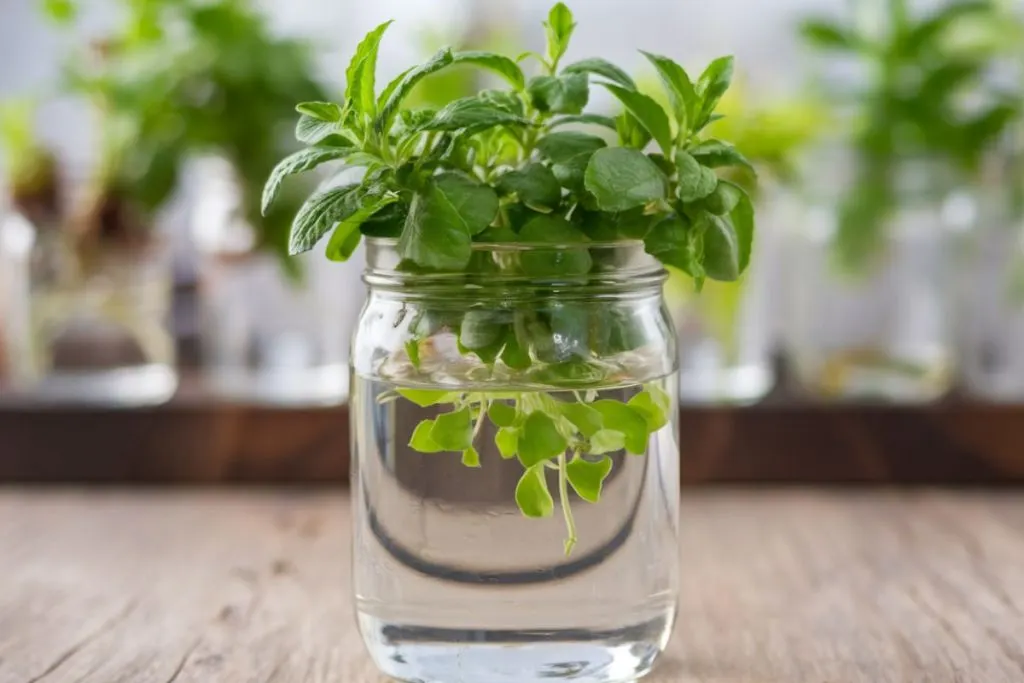
Benefits: Lemon balm has calming effects and is often used to relieve stress and anxiety. The leaves can be brewed into a relaxing tea that promotes a sense of calm.
Lemon balm propagates easily in water. Replace the water every 1-2 weeks, and enjoy its soothing, lemony scent.
12. Stevia
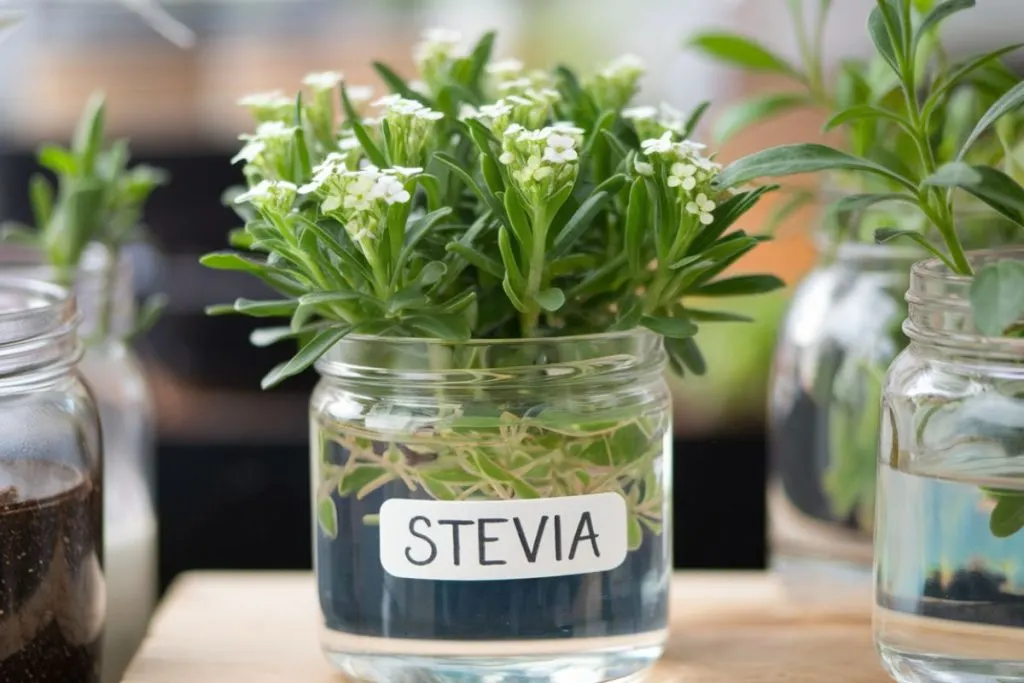
Benefits: Stevia is a natural sweetener that doesn’t spike blood sugar levels. By growing your own stevia, you can enjoy a healthier alternative to refined sugar.
Stevia grows well in water and can be used as a natural sweetener. Change the water every 1-2 weeks, and keep it in bright, indirect light.
13. Marjoram

Benefits: Marjoram has a pleasant aroma and is used to flavor a variety of dishes. It’s also believed to have antioxidant and anti-inflammatory properties.
Marjoram can be rooted in water and grown indoors. Change the water every 2 weeks, and pinch off the tips to encourage bushier growth.
14. Spearmint
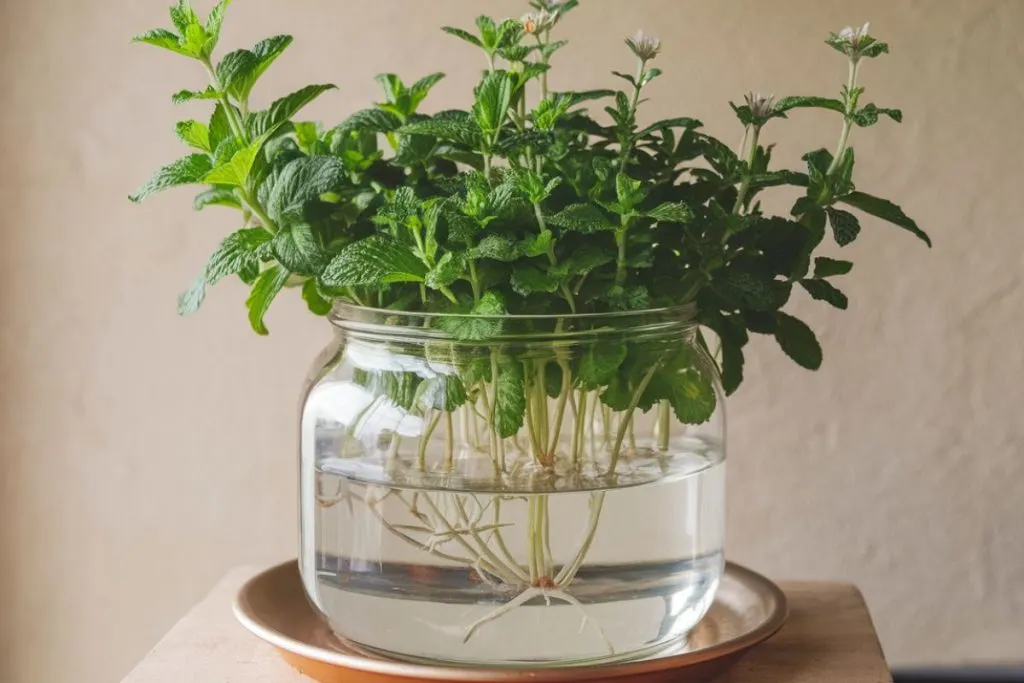
Benefits: Spearmint is known for its digestive benefits and can help relieve symptoms like bloating and indigestion. The leaves can also be brewed into a refreshing tea.
Spearmint, like its minty cousin, grows well in water. Refresh the water every 2-3 days, and pinch back the tips to promote branching.
15. Tarragon
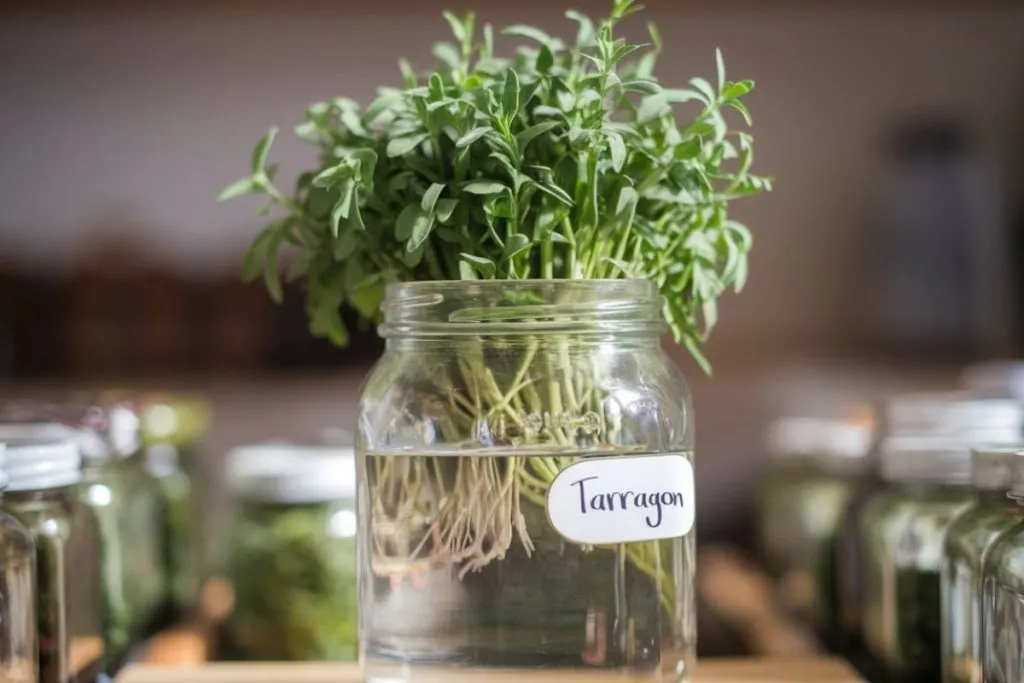
Benefits: Tarragon has a unique flavor and contains compounds that may help regulate blood sugar levels. It’s also rich in vitamins and minerals.
Tarragon takes a bit longer to root in water but will eventually thrive. Change the water every 2 weeks, and provide a warm environment for optimal growth.
16. Lavender
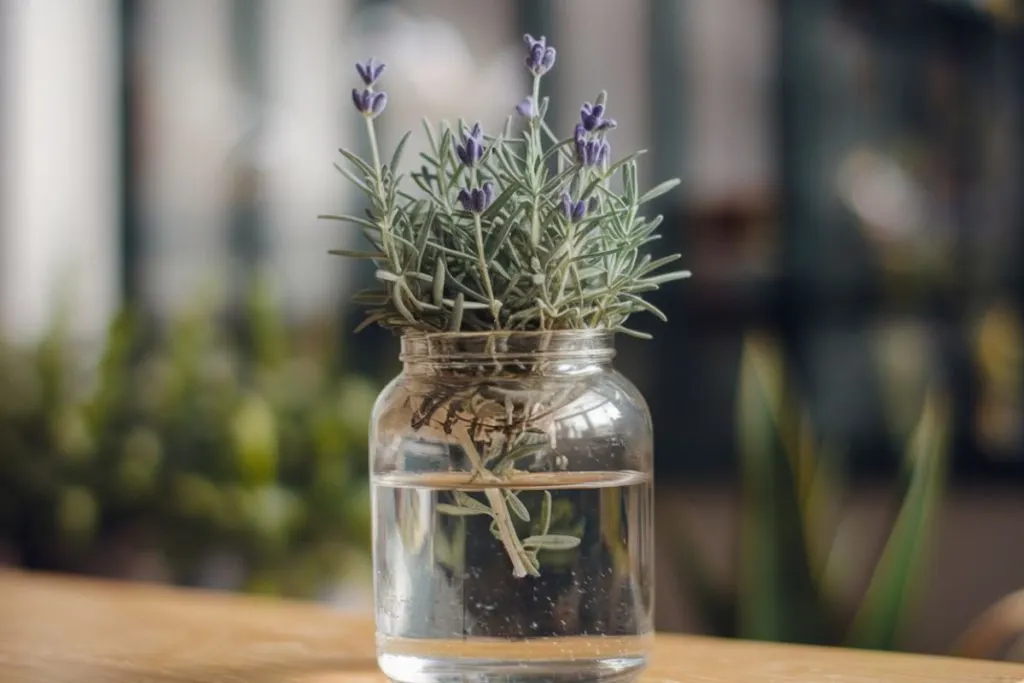
Benefits: The calming scent of lavender is often used for relaxation and improving sleep quality. Lavender tea can also have a soothing effect on the nervous system.
Lavender can be rooted in water, offering a pleasant fragrance to your home. Replace the water every 2 weeks, and make sure it gets plenty of sunlight.
17. Dill
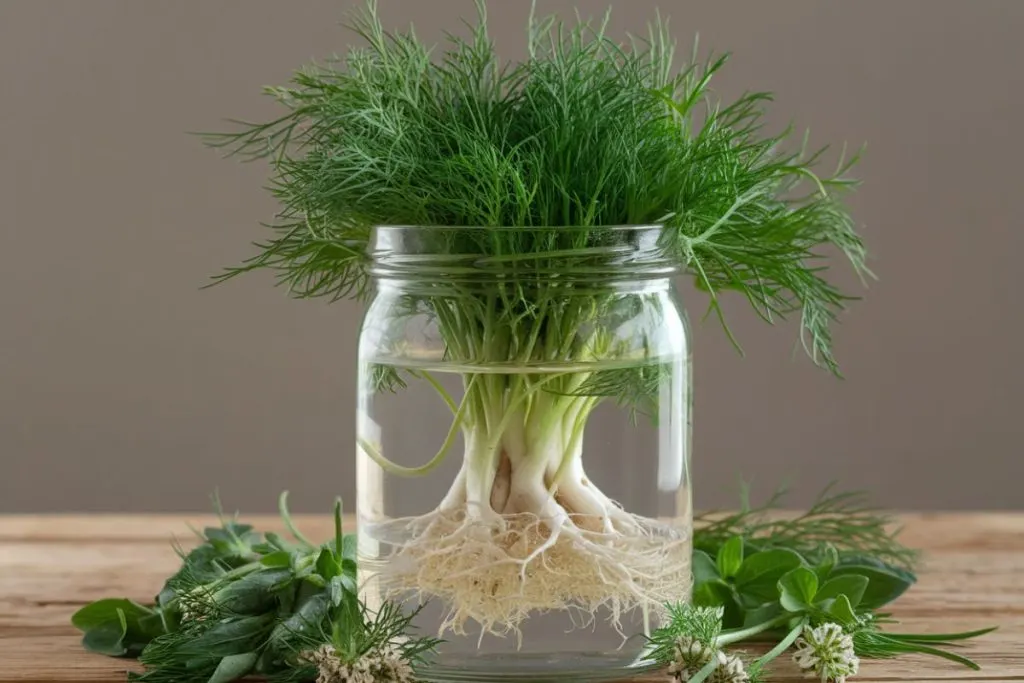
Benefits: Dill has antibacterial properties and is often used to support digestion. Its leaves and seeds add unique flavor to both culinary and pickling recipes.
Dill can be grown in water, providing you with its feathery fronds. Change the water every 3-4 days, and pinch off the flowers to extend its life.

